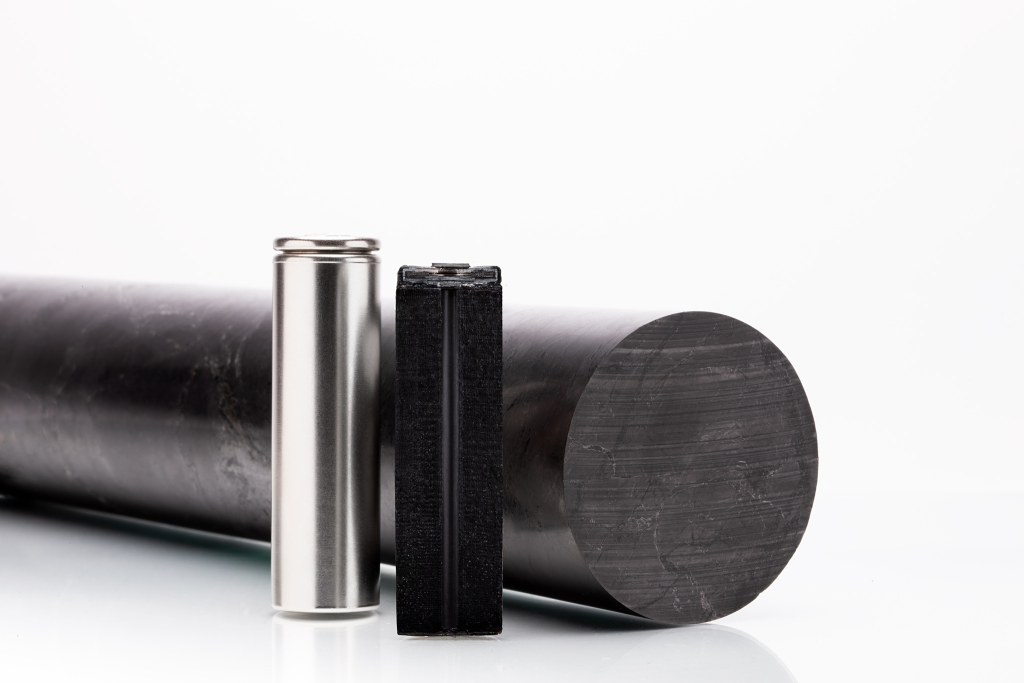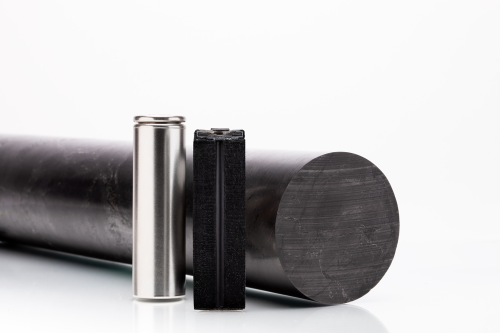carbon material
Carbon materials are the most widely used and most common anode materials for commercial use today, mainly including natural graphite, artificial graphite, hard carbon, soft carbon, MCNB (mesocarbon microspheres). Before the next generation of anode materials mature, carbon materials especially However, graphite materials will still be the first choice and mainstream of negative electrode materials.
1.1 Graphite
Graphite is divided into natural graphite and artificial graphite according to the difference between its raw material and processing technology. Because of its low potential for lithium, high initial efficiency, good cycle stability, and low cost, graphite has become an ideal choice for lithium-ion battery applications. Negative material.
Natural graphite: Generally, natural flake graphite is used as raw material, which is modified to make spherical natural graphite for use. Although natural graphite is widely used, there are several disadvantages: ① natural graphite has many surface defects, large specific surface area, and low initial efficiency; ② using PC-based electrolyte, there is a serious co-intercalation phenomenon of solvated lithium ions, which leads to graphite layer expansion Peel off, and the battery performance will fail; ③Natural graphite has strong anisotropy, lithium ions can only be inserted from the end face, and the rate performance is poor and lithium is easily separated.
Modification of natural graphite:
①Aiming at the problems of many surface defects and poor electrolyte tolerance of natural graphite, different surfactants were used for modification.
②Aiming at the problem of strong anisotropy of natural graphite, mechanical treatment is often used in industrial production to shape the shape of the particles spherically. The airflow shaper uses wind impact to make the particles rub against each other and cut the edges and corners of the particles. This method does not Doping impurities will be introduced, and the spheroidization efficiency is high, but it will cause a large number of particles to be pulverized, and the yield is low. The mechanical fusion machine uses the high-speed rotation of the material in the rotor, clings to the wall of the device under the action of centrifugal force, and passes between the rotor and the stator extrusion head at high speed. At this moment, the material is simultaneously subjected to extrusion force and shear force, and under the action of friction between particles and particles and between particles and equipment, the surface presents a mechanical melting state to achieve the purpose of spherification. Natural graphite has been spheroidized, and the particle size D50 ranges from 15 to 20 μm. The initial efficiency and cycle performance are significantly improved, and the rate performance is greatly improved.
Artificial graphite: It is generally made of dense petroleum coke or needle coke as a precursor, which avoids the surface defects of natural graphite, but still has problems such as poor rate performance due to crystal anisotropy, poor low temperature performance, and easy lithium decomposition when charging.
1.2 Soft Carbon
Soft carbon, also known as graphitizable carbon material, refers to an amorphous carbon material that can be graphitized at a high temperature above 2500°C. Generally speaking, according to the difference in the sintering temperature of the precursor, soft carbon will produce three different crystal structures, namely amorphous structure, turbulent layer disordered structure and graphite structure. The graphite structure is also the common artificial graphite. Among them, the amorphous structure has attracted extensive attention because of its low crystallinity, large interlayer spacing, and good compatibility with the electrolyte, so it has excellent low-temperature performance and good rate performance.
1.3 Hard Carbon
Hard carbon, also known as non-graphitizable carbon material, is difficult to graphitize at high temperatures above 2500°C, and is generally obtained by heat treatment of the precursor in the range of 500-1200°C. Common hard carbons include resin carbon, organic polymer pyrolytic carbon, carbon black, and biomass carbon.
Lithium titanate material
Application fields: The advantages and disadvantages of lithium titanate are very obvious, and the performances are relatively extreme. Therefore, it is the correct application method to apply to specific subdivision fields and give full play to its strengths. At present, lithium titanate batteries are mainly used in urban pure electric BRT buses, electric hybrid buses, power frequency modulation and peak shaving auxiliary services and other fields.
Silicon-based materials
Research hotspots: Silicon is considered to be one of the most promising anode materials. Its theoretical gram capacity can reach 4200mAh/g, which is more than 10 times higher than that of graphite materials. At the same time, the lithium intercalation potential of Si is higher than that of carbon materials, and the risk of lithium deposition during charging is small. safer. At present, the research hotspots of silicon-based materials are divided into two directions, namely nano-silicon carbon materials and silicon-oxygen (SiOx) negative electrode materials.
The direction of improvement: In response to the above problems, scholars have continuously explored new methods to improve the performance of silicon anode materials in recent years. The current mainstream direction is to use graphite as a matrix and mix 5% to 10% of nano-silicon or SiOx to form a composite material and Carry out carbon coating to suppress particle volume change and improve cycle stability.
Nano silicon carbon material
Material design: The initial research on nano-silicon carbon materials mainly focused on the low-capacity direction of 400-500mAh/g, and the material structure mainly includes core-shell type and embedded type.
Optimizing the battery chemical system: In addition to material design, the battery chemical system is also optimized by studying binders, conductive agents and electrolytes. The 600-cycle capacity retention rate of 400mAh/g silicon carbon materials is over 80%. On this basis, through optimization Granular structure, developing high power type materials.
SiOx material
Lithium supplementation: The reversible capacity of SiOx materials is as high as 1500-2000mAh/g, and the volume expansion during the lithium intercalation process is only 120% (nano-silicon materials can reach more than 300%), which greatly improves the cycle life of Si-based materials. However, during the first intercalation process of SiO material Li, Li4SiO4 with no electrochemical activity will be generated, resulting in the initial efficiency of SiOx materials being far lower than that of graphite and silicon carbon materials, which has also become the main obstacle for the application of SiOx materials. Therefore, for The research on SiOx materials mainly focuses on how to reduce the first irreversible capacity. For this reason, researchers have developed different methods of lithium supplementation in an attempt to compensate for the active lithium consumed by the negative electrode during the first charging process.
Research direction: The pre-lithiation process of SiOx materials is still in the laboratory stage due to high requirements on the environment and cannot be applied on a large scale. Therefore, the follow-up research will focus on the pre-lithiation of positive electrode materials and the pre-lithiation of SiOx materials.


